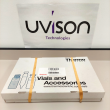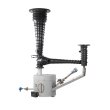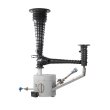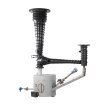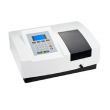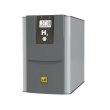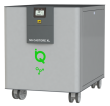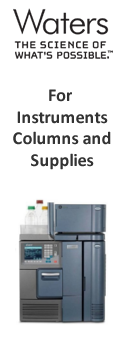Description : The EZgeneTM Mollusks RNA maxi Kit is designed for efficient recovery of total RNA greater than 200 nt from molluscs, roundworms, flatworms, and other invertebrate tissue samples rich in mucopolysaccharides. The procedure relies on the well established properties of the cationic detergent, cetyltrimethyl ammonium bromide (CTAB), in conjunction with the selective RNA binding of silica membrane. Samples are homogenized and lysed in a high salt buffer containing CTAB and extracted with chloroform to remove mucopolysaccharides and denature proteins. Following a rapid alcohol precipitation step, binding conditions are adjusted and RNA further purified using ezBind RNA spin columns. In this way salts, proteins and other contaminants are removed to yield high quality total RNA suitable for downstream applications such as reverse transcription, poly (A)+ mRNA selection, and hybridization techniques. DNase I (optional) should be stored at -20°C. All other components can be stored at room temperature (22-25°C). All kit components are guaranteed for 1 year from the date of purchasing. Note:DNase I are not supplied. They could be purchased from Biomiga. Catalog# R6619-00 R6619-01 R6619-02 Preps 4 50 250 ezBind Columns 4 50 250 Collection Tubes 8 100 500 Buffer BML 2 ml 20 mL 100 mL Buffer LY 4 mL 30 mL 130 mL Buffer RB 4 mL 45 mL 220 mL RNA Wash Buffer 2 mL 20 mL 54 mL DEPC-Treated ddH2O 500 µL 20 mL 70 mL DNase I Stop Buffer 400 µL 4.8 mL 24 mL User Manual 1 1 1 Prepare all components and get all necessary materials ready by examining this instruction booklet and become familiar with each steps. Problems Possible reasons Suggested Improvements Low A260/A280 ratios Protein contamination Do a Phenol: Chloroform extraction. Loss of total RNA (up to 40%) should be expected. Low A260/A280 ratios Guanidine Thiocyanate contamination Add 2.5 volumes of ethanol and 0.1M NaCl (final concentration) to precipitate RNA. Incubate for 30 min at -20 ℃. Centrifuge at 10,000 g for 15 min at 4°C Resuspend the RNA pellet in DEPC-treated water. Low Yield RNA in sample degraded Freeze samples immediately in liquid nitrogen and store at -70°C after collect it. Low yield RNA remains in the column Pre-heat DEPC-treated ddH2O and repeat elution. Low Yield The binding capacity of the membrane in the spin column was exceeded Use of too much tissue sample exceeding the binding capacity of spin column will cause the decreasing of total RNA yield. Low Yield Ethanol not added to buffer Add ethanol to the RNA Wash Buffer and DNase Stop Solution before purification. Genomic DNA contamination Too much total RNA sample was used in RT-PCR. Reduce total RNA amount used in RT-PCR to 50-100 ng. Genomic DNA contamination The sample may contain too much genomic DNA. Reduce the amount of starting tissue in the preparation of the homogenate. Most tissues will not show a genomic DNA contamination problem at 30 mg or less per prep. Increase buffer volume and do multiple loadings to column. Operating Protocol :Introduction
Storage and Stability
Kit Contents
Before Starting
Important
Materials supplied by users
Trouble Shooting Guide
- Model: R6619-02
- Manufactured by: Biomiga







